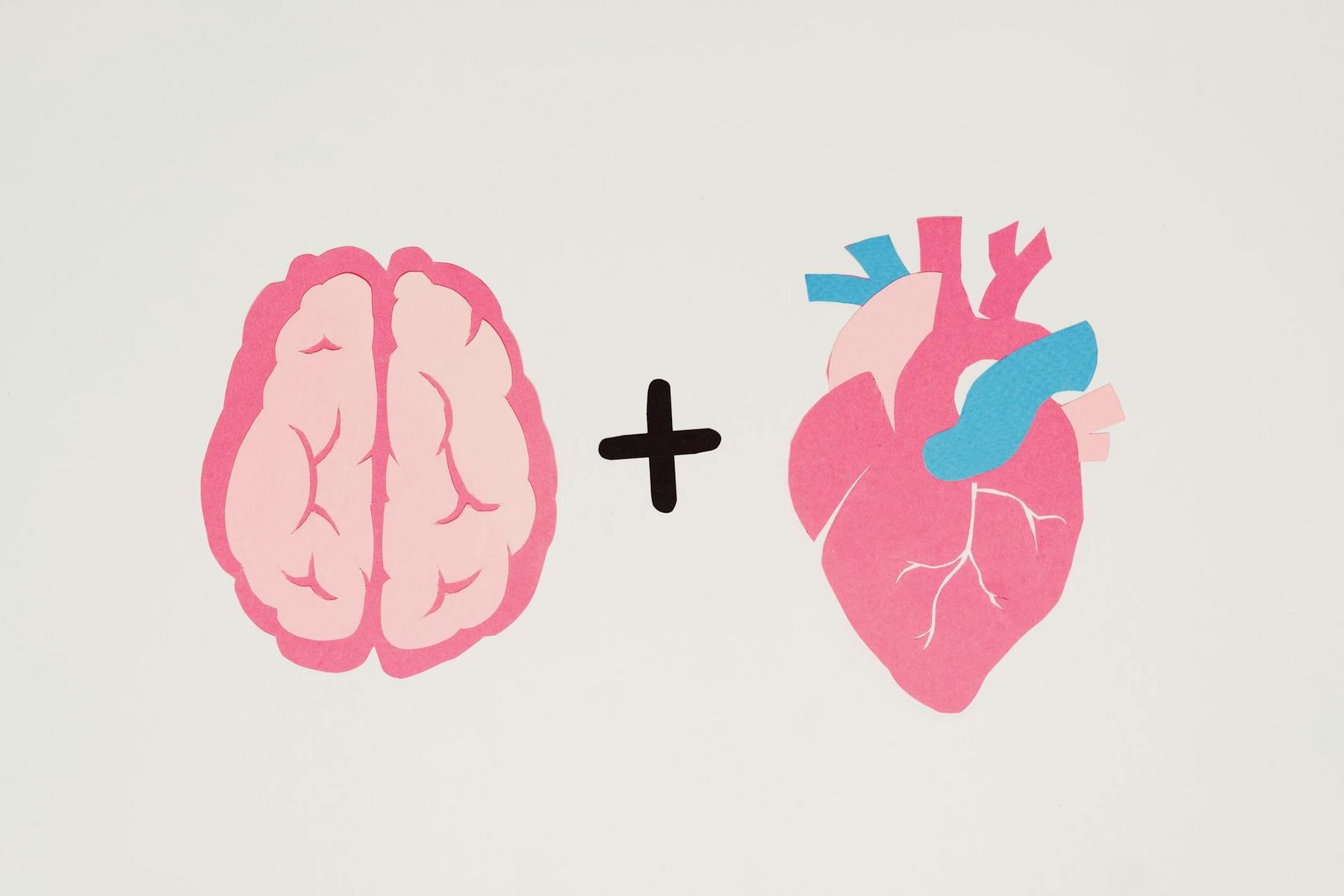The human body operates as an intricate symphony of interconnected systems, yet few relationships prove as consequential as the bidirectional communication between psychological stress and immune function. When stress hormones surge through your bloodstream, they don’t simply affect your mental state—they fundamentally reshape how your immune system responds to threats, how inflammation develops, and how your body maintains homeostasis. For Australians navigating the complexities of modern life in 2026, understanding these scientific connections isn’t merely academic curiosity; it represents essential knowledge for comprehending the profound ways our psychological experiences influence our biological defences. The relationship between stress and immunity extends far beyond simple cause and effect, encompassing sophisticated neuroendocrine pathways, cellular communication networks, and evolutionary adaptations that continue to shape human health in contemporary environments.
What Is the Biological Relationship Between Stress and Immune Function?
The connection between stress and the immune system represents one of the most extensively studied areas in psychoneuroimmunology, a field examining how psychological processes influence immune responses. At its foundation, this relationship operates through the hypothalamic-pituitary-adrenal (HPA) axis, a complex communication network that translates psychological experiences into biological signals.
When you encounter a stressor—whether physical, psychological, or social—your brain’s hypothalamus initiates a cascade of hormonal responses. This activation triggers the release of stress hormones, particularly cortisol, which then interact with immune cells throughout your body. These immune cells possess receptors specifically designed to recognise and respond to stress hormones, demonstrating that evolution has hardwired this connection into human physiology.
The immune system comprises two primary branches: innate immunity, which provides immediate, non-specific defence, and adaptive immunity, which develops targeted responses over time. Stress influences both branches, though the effects vary depending on duration, intensity, and the individual’s physiological baseline. Immune cells, including lymphocytes, natural killer cells, and macrophages, all modify their activity in response to stress hormones, adjusting inflammatory responses and cellular defence mechanisms.
Crucially, the relationship operates bidirectionally. Whilst stress hormones influence immune function, immune cells also produce signalling molecules called cytokines that communicate with the brain, creating a feedback loop. This sophisticated dialogue ensures coordinated responses between psychological state and immune readiness, though chronic activation of this system can lead to dysregulation.
How Does Chronic Stress Differ From Acute Stress in Immune Response?
The duration and pattern of stress exposure fundamentally determines its immunological consequences, creating distinctly different outcomes between short-term and prolonged experiences. Understanding this temporal dimension proves essential for comprehending why stress doesn’t always impair immunity—and sometimes even enhances it.
Acute stress, lasting minutes to hours, typically enhances immune function through a process termed stress-induced immune redistribution. During these brief encounters, stress hormones mobilise immune cells from storage sites, redistributing them to tissues where threats might emerge, such as the skin and lymph nodes. This represents an evolutionarily advantageous response, preparing the body for potential injury or infection during fight-or-flight situations. Research demonstrates that acute stress can enhance vaccine responses, wound healing, and resistance to certain infections.
Chronic stress, however, produces markedly different immunological outcomes. When stress persists for weeks, months, or years, the sustained elevation of stress hormones shifts the immune system toward a pro-inflammatory state whilst simultaneously suppressing certain protective functions. This paradoxical pattern—increased inflammation alongside diminished immune surveillance—characterises chronic stress immunology.
| Stress Type | Duration | Primary Immune Effect | HPA Axis Status | Inflammatory Profile |
|---|---|---|---|---|
| Acute Stress | Minutes to hours | Enhanced redistribution and activation | Temporarily activated | Balanced, adaptive |
| Episodic Acute | Repeated short episodes | Variable, depends on recovery | Fluctuating activation | Potentially inflammatory |
| Chronic Stress | Weeks to years | Suppressed cell-mediated immunity | Persistently dysregulated | Pro-inflammatory shift |
The distinction between acute and chronic stress illuminates why stress management represents more than psychological comfort—it reflects fundamental immune system regulation. Chronic psychological stress has been associated with altered antibody responses, delayed wound healing, and increased susceptibility to inflammatory conditions, demonstrating the far-reaching consequences of prolonged HPA axis activation.
What Are the Physiological Pathways Linking Stress to Immune Response?
The translation of psychological stress into immune alterations occurs through multiple, interconnected physiological pathways, each contributing to the overall immunological outcome. These mechanisms operate simultaneously, creating a complex network of signals that coordinate stress responses across organ systems.
The HPA axis represents the primary neuroendocrine pathway connecting stress and immunity. Upon perceiving a stressor, the hypothalamus releases corticotrophin-releasing hormone, which stimulates the pituitary gland to secrete adrenocorticotrophic hormone. This cascade culminates in the adrenal glands producing cortisol, the body’s principal stress hormone. Cortisol then binds to glucocorticoid receptors on immune cells, modulating their gene expression and functional activity.
The sympathetic nervous system provides a second critical pathway through catecholamine release, particularly adrenaline and noradrenaline. These neurotransmitters rapidly alter immune cell function through beta-adrenergic receptors, affecting cellular migration, cytokine production, and inflammatory responses. The sympathetic nervous system’s influence extends throughout lymphoid organs, including the spleen, thymus, and lymph nodes, where nerve fibres directly innervate immune tissue.
Beyond these classical pathways, the vagus nerve—part of the parasympathetic nervous system—exerts anti-inflammatory influences through the cholinergic anti-inflammatory pathway. This mechanism demonstrates that the nervous system doesn’t merely activate inflammation but also possesses intrinsic regulatory mechanisms to resolve it.
Stress also influences immune function through behavioural pathways. Psychological stress often alters sleep patterns, dietary choices, physical activity, and social behaviours, each of which independently affects immune function. These behavioural changes create indirect but substantial immunological consequences that compound the direct neuroendocrine effects.
The cumulative impact of these pathways depends on individual variability in stress perception, genetic factors influencing receptor sensitivity, prior stress exposure, and concurrent environmental influences. This complexity explains why identical stressors produce different immunological outcomes across individuals.
Which Immune System Components Are Most Affected by Stress?
Stress hormones don’t uniformly suppress or enhance all immune functions; rather, they selectively modulate different cellular populations and immunological processes, creating a nuanced pattern of effects across the immune landscape.
T lymphocytes, essential coordinators of adaptive immunity, demonstrate particular sensitivity to stress hormones. Chronic stress can reduce T cell proliferation and alter the balance between different T cell subtypes, potentially shifting the immune system’s overall functional capacity. Natural killer cells, which provide crucial defence against tumour cells and virally infected cells, show decreased activity under chronic stress conditions, whilst their numbers in circulation may temporarily increase during acute stress.
The inflammatory response represents another stress-sensitive immune component. Chronic stress promotes sustained elevation of pro-inflammatory cytokines, molecules that orchestrate inflammation. This pro-inflammatory shift has been observed across diverse populations and stress contexts, suggesting a fundamental mechanism linking psychological state to inflammatory biology. The persistence of low-grade inflammation under chronic stress conditions has implications for numerous physiological systems beyond immunity.
B lymphocytes and antibody production also respond to stress exposure, though the effects vary by context. Some research suggests that chronic stress can impair antibody responses to new antigens, potentially affecting the body’s ability to mount effective immune responses to novel pathogens. However, pre-existing antibody titres may remain relatively stable, indicating selective rather than global immunosuppression.
Innate immune cells, including macrophages and neutrophils, modify their functional activity under stress. These cells may exhibit altered phagocytic capacity, changed cytokine production profiles, and modified responsiveness to immune signals. The innate immune system’s immediate response capability makes it particularly important for acute defence, and stress-induced changes to these cells can have rapid physiological consequences.
The thymus, a primary lymphoid organ where T cells mature, undergoes structural and functional changes with chronic stress exposure. This organ’s sensitivity to stress hormones reflects the deep integration between neuroendocrine and immune systems during development and throughout life.
Can Stress-Induced Immune Changes Be Measured and Monitored?
The scientific characterisation of stress-immune interactions relies on multiple measurement approaches, each revealing different aspects of this complex relationship. These methodologies have evolved considerably, providing increasingly sophisticated insights into how psychological states translate into immunological changes.
Immune cell enumeration represents one foundational approach, quantifying different lymphocyte populations in peripheral blood. Flow cytometry allows researchers and clinicians to identify specific cell types, assess their relative proportions, and determine their activation status. These measurements can reveal stress-induced redistribution of immune cells and changes in cellular phenotypes that indicate altered functional capacity.
Functional assays evaluate how immune cells respond to challenges, measuring their proliferative capacity, cytokine production, and cytotoxic activity. These assessments provide insights beyond mere cell counts, revealing whether immune cells can effectively execute their protective functions under stress conditions. Such functional measurements often prove more clinically relevant than enumeration alone.
Biomarkers of inflammation, including C-reactive protein and various cytokines, offer indirect but accessible indicators of stress-immune interactions. Elevated inflammatory markers under chronic stress conditions reflect the pro-inflammatory shift characteristic of sustained HPA axis activation. These biomarkers can be measured through standard laboratory procedures, making them practical for monitoring purposes.
Neuroendocrine measurements, particularly cortisol assessment through saliva, blood, or hair samples, provide complementary information about HPA axis function. Cortisol patterns—inclusive of diurnal rhythms and responsiveness to challenges—illuminate the neuroendocrine component of stress-immune relationships. Abnormal cortisol patterns often correlate with altered immune function, though the relationship isn’t always linear.
Emerging approaches include measuring epigenetic modifications that reflect how stress exposure alters gene expression in immune cells. These molecular signatures can persist beyond the immediate stress period, potentially explaining long-term immunological consequences of earlier stress experiences. Such techniques represent the frontier of stress-immune research, though they remain primarily investigational.
The interpretation of stress-immune measurements requires contextualising results within individual baselines, recognising that substantial inter-individual variability exists in both stress responses and immune function. Longitudinal monitoring often proves more informative than single time-point assessments, revealing dynamic patterns that characterise an individual’s stress-immune relationship.
Understanding Individual Variability in Stress-Immune Responses
Not everyone responds identically to stress, and this variability extends to immunological consequences. Individual differences in stress-immune relationships reflect genetic factors, developmental experiences, current life circumstances, and physiological resilience mechanisms that collectively determine how psychological stress translates into immune changes.
Genetic polymorphisms affecting stress hormone receptors, cytokine production, and neurotransmitter systems contribute to individual variability in stress responses. Some individuals possess genetic variants associated with heightened cortisol reactivity, whilst others demonstrate more muted neuroendocrine responses. These constitutional differences influence the magnitude of stress-induced immune changes, explaining why identical stressors produce different outcomes across people.
Early life experiences fundamentally shape stress-immune biology throughout the lifespan. Developmental stress can programme HPA axis responsiveness and immune function through mechanisms including epigenetic modifications. These early experiences create biological signatures that persist into adulthood, influencing how individuals respond to subsequent stressors. Conversely, positive early environments may confer stress resilience, buffering against the immunological consequences of later adversity.
Psychological factors, including coping styles, perceived control, and social support, mediate the relationship between objective stressors and biological responses. Individuals who perceive stressors as manageable challenges rather than overwhelming threats often demonstrate different neuroendocrine and immune patterns compared to those who feel helpless. These psychological dimensions don’t merely influence subjective experience—they shape the objective biological translation of stress.
Physical health status at the time of stress exposure modulates immune responses. Individuals with pre-existing inflammatory conditions, metabolic dysregulation, or compromised immune function may respond differently to stress compared to those with robust baseline health. This interaction between stress and existing health status creates complex patterns that require individualised consideration.
Age represents another crucial variable, with stress-immune relationships shifting across the lifespan. The developing immune system of youth, the mature responses of adulthood, and the changes associated with immunosenescence in older age all influence how stress affects immunity. Understanding these age-related variations proves essential for contextualising stress-immune research and its implications.
The Contemporary Relevance of Stress-Immune Science
In modern Australia, where occupational demands, urban living, and digital connectivity create novel stress patterns, understanding stress-immune connections carries particular relevance. The nature of contemporary stressors differs markedly from those faced by our evolutionary ancestors, yet our biological stress responses remain fundamentally unchanged, creating potential mismatches between evolved mechanisms and modern environments.
Chronic psychological stress has become increasingly prevalent in developed societies, with work stress, financial pressures, and social disconnection representing common experiences for many Australians. These modern stressors often lack the physical resolution that might have characterised ancestral threats, potentially maintaining chronic HPA axis activation without the behavioural discharge that might restore homeostasis.
The recognition of stress-immune connections has fostered increased scientific interest in mind-body interventions and their immunological correlates. Research examining various stress-reduction approaches has documented measurable immune changes, validating the biological reality of stress-immune relationships and suggesting potential avenues for supporting immune function through psychological pathways.
Emerging research continues to reveal additional layers of complexity in stress-immune relationships, including the role of the microbiome, circadian rhythm disruption, and social isolation in mediating these connections. The gut microbiota, in particular, represents an exciting frontier, with evidence suggesting that stress influences microbial communities, which in turn affect immune function through multiple mechanisms.
The integration of stress-immune science into healthcare approaches reflects growing appreciation for holistic perspectives that acknowledge the interconnectedness of psychological and physical health. This integration doesn’t diminish the importance of conventional approaches but rather enriches understanding of the multiple factors influencing immune function and overall wellbeing.
Synthesising Science and Personal Understanding
The scientific exploration of stress and immune system connections reveals a sophisticated, bidirectional relationship that operates through multiple physiological pathways, affects numerous immune components, and varies substantially across individuals and contexts. This understanding transcends simplistic notions of stress merely “weakening” immunity, instead illuminating the nuanced ways psychological experiences reshape immunological function through evolutionarily conserved mechanisms.
The distinction between acute and chronic stress proves particularly consequential, with short-term stress potentially enhancing immune readiness whilst prolonged stress promotes dysregulation characterised by increased inflammation alongside suppressed protective functions. This temporal dimension underscores the importance of stress chronicity rather than stress per se in determining immunological outcomes.
Individual variability in stress-immune relationships reflects the integration of genetic, developmental, psychological, and contextual factors, creating unique response patterns that resist universal generalisation. This complexity demands personalised consideration of how stress might affect immune function for any given individual, acknowledging that population-level findings don’t automatically apply to specific cases.
As scientific understanding of stress-immune connections continues to evolve, the imperative remains to translate these insights into approaches that support both psychological wellbeing and immune health. The biological reality of mind-body connections, far from representing alternative thinking, reflects mainstream immunological science that increasingly recognises the inseparability of mental and physical health in human biology.
Looking to discuss your health options? Speak to us and see if you’re eligible today.
Does psychological stress always suppress immune function?
No, psychological stress doesn’t uniformly suppress immunity. Acute, short-term stress can enhance certain immune functions through stress-induced immune redistribution, while chronic stress typically impairs immune surveillance and promotes inflammation.
How long does it take for chronic stress to affect the immune system?
The timeframe varies depending on the immune parameter and individual factors. Some immune alterations can occur within weeks of sustained stress exposure, while others may develop over months or years. Importantly, the immune system may recover once stress diminishes.
Can stress-induced immune changes increase susceptibility to illness?
Chronic stress has been linked to alterations in immune responses, including delayed wound healing and sustained inflammation, which may theoretically increase susceptibility to illness. However, multiple factors including behavior and overall health also play a key role.
Are some immune cells more affected by stress than others?
Yes, different immune cell populations respond differently to stress hormones. For example, T lymphocytes and natural killer cells are particularly sensitive to cortisol, and chronic stress can alter their function and distribution, while inflammatory cytokine-producing cells may become more active.
What role does cortisol play in stress-immune interactions?
Cortisol, the primary stress hormone, binds to glucocorticoid receptors on immune cells, modulating gene expression and cell function. Acute increases can enhance immune readiness, while chronic elevation typically suppresses certain immune responses and promotes inflammation.













